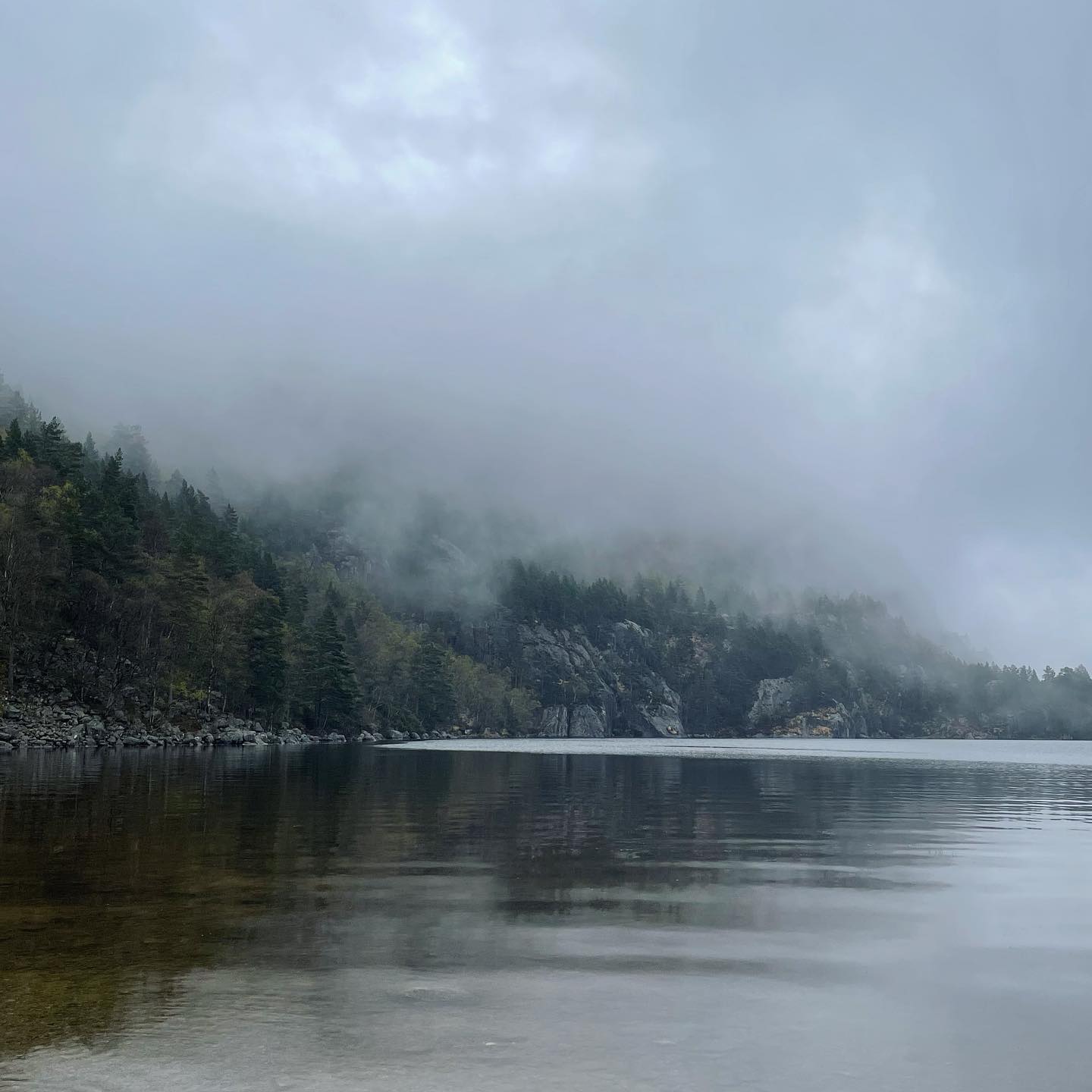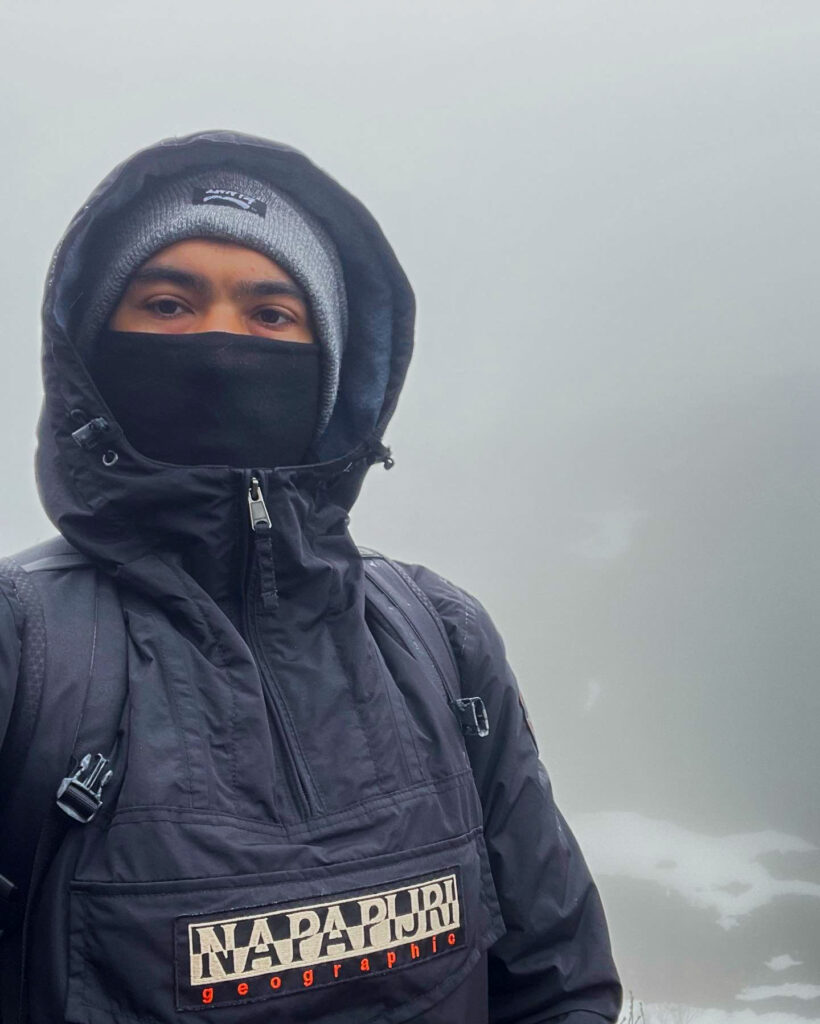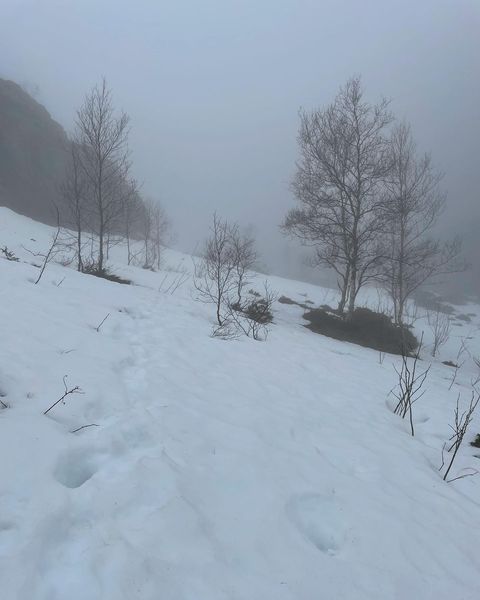Setting off in the ominous greys that characterise many a Nordic morning, the journey began on the coach departing from Stavanger. As we rolled through the city’s vibrant core, the warmth of its colours quickly gave way to the cool, muted tones of the surrounding wilderness. Before long, we were swallowed by an underground tunnel, its concrete walls lit with an ambient, orange glow as we travelled deeper into the hearts of the Norwegian fjords. After longer than expected underground, we emerged from the dim darkness of the tunnel to be greeted by the tall, dark peaks of the fjords as our eyes re-adjusted to the outside world.

As soon as the coach doors opened, the true adventure began. Having left behind the comfort of the Stavanger’s cafes and tourist shops, I started the ascent up the steep stairway that led me directly into the mountain’s embrace. The clouds, thick with mist, rolled in as if to greet me; yet, seemed to rise with each step I took – never quite cloaking me. Soon the dark greens of the lowland forests quickly faded, replaced by the stark greys and whites of the snow and granite as I explored deeper into the heart of the Fjords.

Two hours into the hike, I stumbled upon a surprise—a cluster of Tibetan prayer flags hanging between a series of trees and rocks. As a practicing Buddhist, the sight was a welcome reminder of the deep passion that drives adventurers across the globe. It’s a memory that, despite the missed photo, remains vivid in my mind.

With my spirits lifted, I pressed on, eager to reach the highlight of the hike: the iconic Puplit Rock, or as the Norwegians refer to it, Preikestolen. The path ahead seemed to push me onward, and I quickened my pace as the jagged cliffs of Preikestolen appeared on the horizon. To capture the best shot, I ventured off the main path, scrambling up the rock for a better view. There, balancing on the edge, I couldn’t help but notice the nearly 600m drop to my left. But the view—sweeping across the fjords below—was worth every nerve.
Exploring beyond my comfort zone, the summit of Moslifjellet, at 718m, wasn’t far off. As I climbed higher, the snow deepened, swallowing my boots with every step. At one point, I found myself thigh-deep in powder as I misjudged what layer under the snow, but I could feel the summit was close so I pressed on.

Reaching the top, the views were incredible. Although the wind soon became relentless and cold, prompting me to keep moving, staying alert.

I explored further along the ridge line before deciding it was time to find a route home. After navigating a new route back, I was by the bus stop, the day’s journey winding to a close.
Day two brought a stark contrast. The weather had shifted, and the fjords took on a new, quieter character—one defined by solitude, silence, and a cloak of white. This time, I was headed for Moslifjellet, a 709m peak in the north. As I ventured into the mountain range, visibility sat at barely 10 metres in each direction. With this, I kept my map and compass close to hand, listening to nothing but the sound of my own breath and the occasional gust of wind.
As I gained altitude, the cloud thickened as my sense of isolation grew and my nerves began to surface. It were as if I was the only soul left in these peaks with each path looking equally as ominous as the other – each leading to the same destination of the unknown.
I knew at this point the risks were beginning to heighten. There was an obvious danger of getting lost, it was getting colder as I gained altitude, and the clouds were thick in the air around me.
The cold wasn’t unbearable, but my gear was beginning to show its limitations. I was dressed in a basic base-layer and fleece, which did their job well, but my bulky jacket—great for casual wear—wasn’t quite cutting it for winter mountain conditions. I knew on my next hike I’d need to invest in some proper gear.

I paused for a long moment to consider my options. I had to make a crucial decision. Do I carry on or do I turn back?
It was clear that I could turn back if I wanted to. Visibility was low, the weather was cold, and I felt isolated. It almost felt logical to.
Yet, I wasn’t lost. I knew where I was. I could pinpoint my location on the map and I knew where I was going.
I began to realise I was testing my mental limits. I was experiencing total solitude from the safety of the people and amenities contained at the bottom of the mountain and it was pushing me out of my comfort zone.
I stopped for a solid 10 minutes before I decided to carry on.
I knew I could always retrace my footsteps in a worst case scenario, provided it didn’t start snowing. And I promised myself I would turn back if it started snowing and the risk heightened.
An hour later, I stood on the summit of Moslifjellet.
On a clear day, the views across the Stavanger and Antarctic would have been spectacular, but today, I could only see white in each direction. I knew this cloak masked many of the risks I couldn’t otherwise see – Only 20 minutes previously I was considering that just beyond my vision lay a steep drop of a couple of hundred meters down the mountainside.
With the weather still holding, I descended down a different route that I’d marked out on the map the previous day; a snow-covered path, flanked by two towering granite blocks. As the clouds began to lift , I was rewarded with a hauntingly beautiful sight: a still lake, its dark waters reflecting the surrounding rocks and snow in eerie silence. It felt like stepping into another world, one untouched by time.

The absence of sound, though, made it unnerving. No birds. No animals. Just the endless quiet.
At this point, something began not to feel right. I couldn’t quite place my finger on it. I wasn’t sure if it was the silence, or if I was picking up on something that I wasn’t quite conscious of. It felt like I was being watched.
It was a difficult moment. I knew that wildlife wasn’t a safety concern. Bear and wolves were so rare that they may as well not have existed for a hiker. The biggest concern was the environment. The risks of getting lost in low visibility, the cold, and of large bodies of water.
As I paused, the words of a Norwegian saying echoed in my mind: “Det er ingen skam å snu”—there’s no shame in turning back.
I reflected. By this point, I’d seen what I came for: the raw beauty of the fjords, their winter cloak of snow and ice, and I’d conquered my first mountains on this trip.
I decided it was time to quite while I was ahead and trek back to the warmth and safety of the below town.
With this, I began retracing my steps as I pursued the sharpie marks on my map that indicated the start of my journey – taking a small detour as the clouds lightened up to tackle the small nearby peak of Gryteknuten, which stood at a respectable 437m.
Soon after, the adventure had come to a close and the sun began to set. Even though this was a short excursion, the wildness of the fjords would stay with me long after I’d left.
